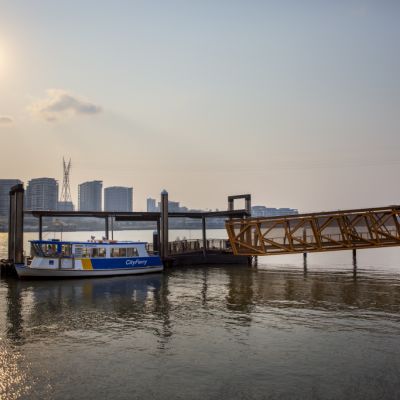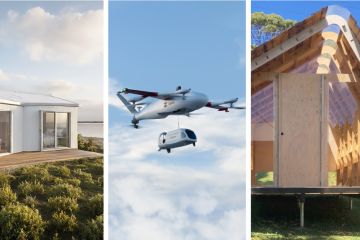Your Domain: The most liveable suburbs in Brisbane, Sydney and Melbourne revealed
Our three biggest cities are beautiful places, but out of the hundreds of suburbs that make up Sydney, Melbourne and Greater Brisbane, which of them are the most liveable?
The idea of what makes a place liveable can strike furious debate and now, drawing together a wealth of exclusive data, the new Domain Liveable Cities studies brings some science to the discussion by rating 569 Sydney suburbs, 307 Melbourne suburbs and 260 Greater Brisbane suburbs based on their capacity to provide quality of life for their residents.
The study, authored by Deloitte Access Economics and Tract Consultants, used a series of indicators to gauge whether a suburb was liveable. Access to cafes, schools, public transport and employment were among the factors examined in the study, as well as traffic congestion, a suburb’s crime rate, its walkability, open space, tree cover and proximity to the coast or beach. In Brisbane and Sydney, airport noise was also included, and in Sydney, harbour and ocean views were as well.
Neighbouring areas were also taken into account – so, for example, if a suburb had not many cafes, but access to lots of them in surrounding suburbs, their cafe provision score was adjusted accordingly.
Of course, no suburb is perfect. But some came pretty close: Milsons Point in Sydney, South Yarra in Melbourne and Alderley in Brisbane.
Sydney’s most liveable suburbs
| 1 | Milsons Point |
| 2 | Lavender Bay |
| 3 | Sydney |
| 4 | Kirribilli |
| 5 | McMahons Point |
| 6 | Wollstonecraft |
| 7 | Darling Point |
| 8 | Waverton |
| 9 | North Sydney |
| 10 | Edgecliff |
“No suburb is good at everything. There are trade-offs in liveability,” said report co-author Dr Daniel Terrill, of Deloitte Access Economics. “High or moderate density suburbs with good access to amenities often suffer from the negatives of high density such as traffic congestion and crime.
“Liveable suburbs tend to have a wider range of amenities. As such they become a more attractive destination — whether for residents or for people beyond the suburb. Think of a suburb with a large concentration of famous/popular eateries for example — you’d expect traffic to intensify around meal times.”
[dm-liveability-data-map type="liveability" city="sydney" indicator="Overall" year="2019" fallback-image-id="908938" /]
And despite rapid growth putting pressure on our cities – particularly road and public transport networks – population growth actually had a positive impact on the liveability of a place, said co-author Adam Terrill, from Tract Consultants.
“Along with people generally comes new services and facilities, such as shops, cafes, open space, and public transport. There is a definite correlation between density and liveability, in that a more dense suburb tends to have greater liveability,” Mr Terrill said.
Melbourne’s most liveable suburbs
| 1 | South Yarra |
| 2 | East Melbourne |
| 3 | Carlton |
| 4 | Fitzroy North |
| 5 | Hawthorn |
| 6 | Footscray |
| 7 | Travancore |
| 8 | Carlton North |
| 9 | Kooyong |
| 10 | Collingwood |
In Sydney, the top suburbs were chiefly on the lower north shore: seven of the top 10 and one-quarter of the 100 most liveable.
While there are a couple of standouts which bucked the trend, such as Parramatta, Sydney’s pattern of liveability was closely related to the coast and harbour, Dr Terrill said.
[dm-liveability-data-map type="liveability" city="melbourne" indicator="Overall" year="2019" fallback-image-id="908890" /]
“This is in contrast to Melbourne, where distance to the CBD appears to be a stronger driver, and Brisbane, which tracks the river,” he said. “Much of this appears to reflect the distribution of [work] opportunities; liveability broadly tracks suburbs that have good access to a wide range of economic opportunities.”
Greater Brisbane’s most liveable suburbs
| 1 | Alderley |
| 2 | Wilston |
| 3 | Ascot |
| 4 | Paddington |
| 5 | Newmarket |
| 6 | Red Hill |
| 7 | Kelvin Grove |
| 8 | Windsor |
| 9 | Albion |
| 10 | Grange |
There was a similar trend in Greater Brisbane, where the 10 most liveable suburbs were in the inner north, and 19 of the top 20 were north of the river. The southside’s sole representative was South Brisbane, which ranked 19th.
Tract Consultants principal town planner Sam Pourmoradian said the top 10 suburbs had all scored within very close range of each other.
“They’re each great examples of suburbs that have a bit of everything,” he said. “The real difference between the suburbs, however, lies in the relevant indicators. For example, Alderley is among the highest suburbs in terms of public transport and open space, while Wilston, which scored second place, did not score as highly in open space — but scores higher on employment proximity and cafes and restaurants.
“Contrastingly, Albion, which is ranked number nine, is the lowest scoring of the top 10 on education and tree cover but compensates for this with top scores for culture and cafes.
“On balance, the suburbs all score really well in terms of overall liveability. Some people may gravitate toward the liveability characteristics of one suburb over another.”
In Melbourne, Mr Terrill, of Tract, said though more expensive suburbs near the CBD tended to rank highest, some outer suburbs such as Frankston (104) and Belgrave (91) had an overall good standard of liveability, despite their lower rankings.
“They offer a distinct lifestyle character and amenity not typical of outer suburbs,” he said. “Each are orientated around a central train station and shopping area and have exceptional access to recreational spaces, be that the Sherbrooke Forest or Frankston Foreshore.”
Your Domain airs at 10am on Saturdays on Nine. Catch up on all episodes on 9Now.
We recommend
We thought you might like
States
Capital Cities
Capital Cities - Rentals
Popular Areas
Allhomes
More








